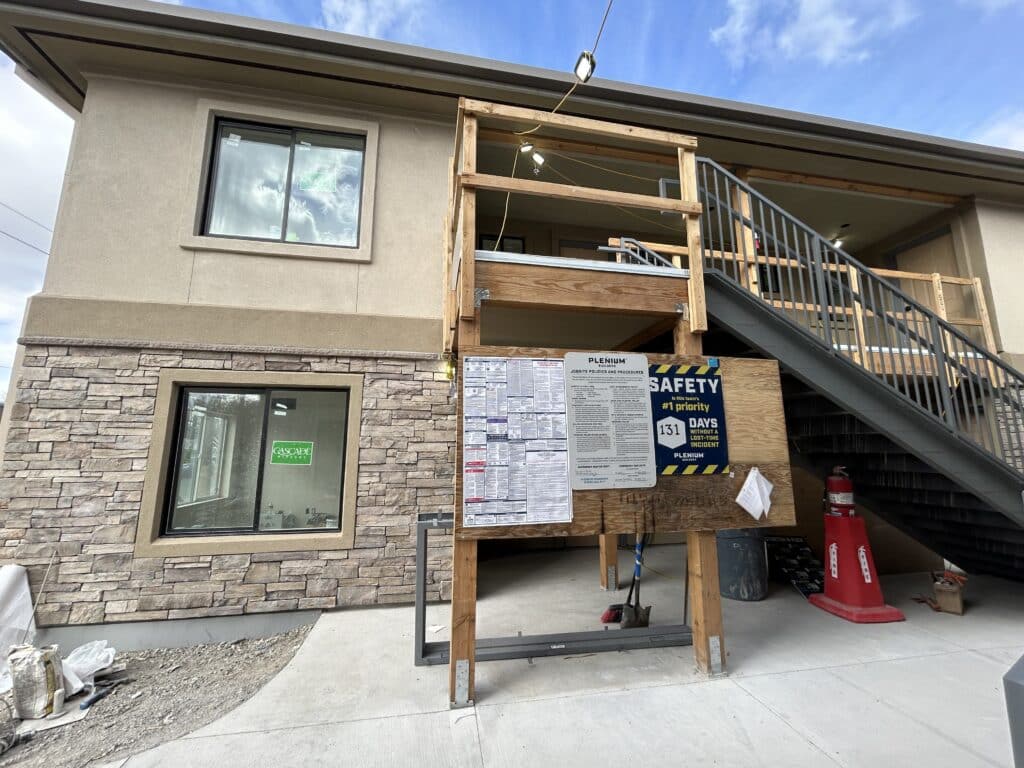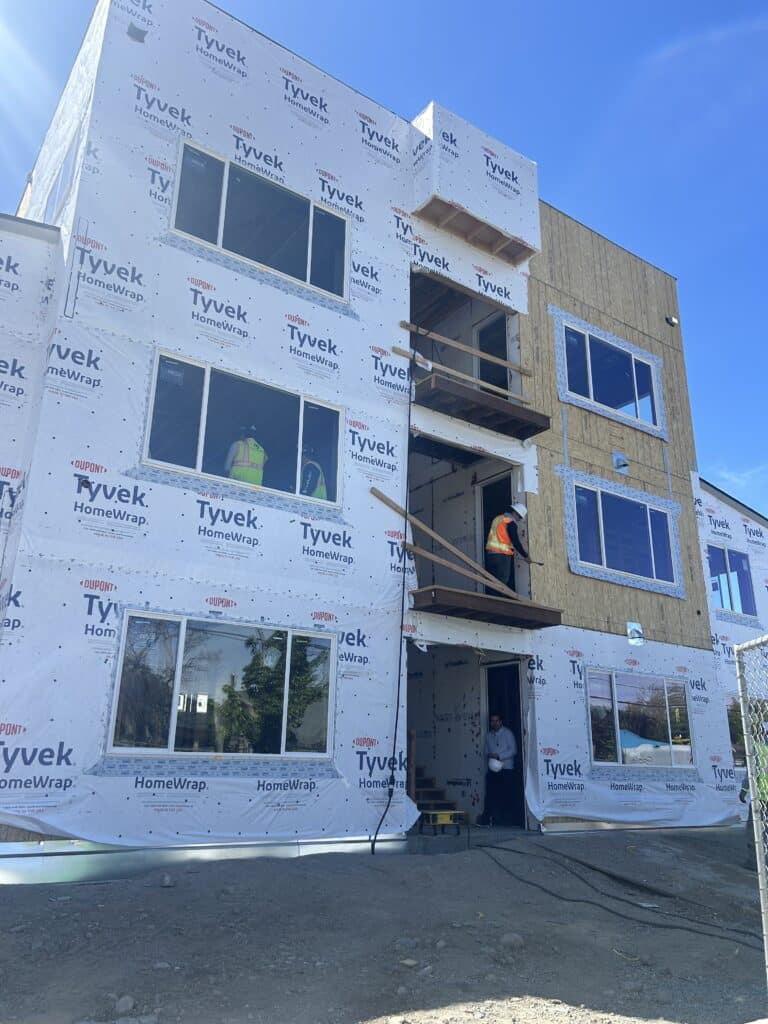COVID Relief Aids Housing, but There’s a Deadline

By Mark Fogarty
8 min read
The American Rescue Plan Act of 2021 (ARPA), the official name of the COVID stimulus bill, wasn’t associated with housing at the time. However, ARPA is proving to be a significant new and existing production driver. There’s a catch, though—the money must be expended by the end of 2026.
Reno, NV is a prime example of ARPA at work, with developments totaling 550 units (150 new, the balance preservation and rehab) using the stimulus money as part of their capital stacks. The “Biggest Little City in the World” public housing authority has taken on many ARPA projects and is working diligently to get the money spent by the deadline.
J.D. Klippenstein, director of development at the City of Reno Housing Authority (RHA), says housing authority, city and state officials “see it as an opportunity to invest in affordable housing in ways they haven’t in the past.”
A former governor of Nevada created the Home Means Nevada Initiative, which dedicated $500 million in ARPA funds to affordable housing statewide, Klippenstein says.
The money went into buckets for new construction, preservation, land acquisition and home ownership. “The lion’s share went to new construction and preservation,” Klippenstein adds.

Reno received $55 million of the funds and has started or scheduled ten projects using the money. The ARPA money will leverage $185 million in development costs. Two are under construction now and five more will be under construction by the end of the year. Another is in predevelopment. They are in Washoe County, Reno and Sparks.
One of the projects under construction, the 12-unit permanent supportive housing Dick Scott Manor, has received $3 million in ARPA funds from the city of Reno and $1.6 million from Home Means Nevada Initiative ARPA funds, allowing it to proceed with no hard debt.
Construction is set to close this month or next, and then lease-up will start. The Veteran’s Administration is managing the lease.
First Out of the Gate
Dick Scott is one of the smaller projects RHA is doing, but “is the first one out of the gate,” Klippenstein says. The development will have two buildings with six units, each with a mix of studios and one-bedroom apartments.
The $5 million infill project also got funds from the Home Depot Foundation and a deferred developers fee.
RHA applied for a grant through the Home Depot Foundation. The Foundation has a designated Veteran Housing Grant program, which is used “to fund the development and repair of multi-unit veteran housing facilities.”
“It is for homeless or at risk of homelessness veterans, in partnership with the Department of Veterans Affairs here in Reno,” Klippenstein says.
The housing authority will own and manage the project once it is finished, and the VA will provide supportive services for the veterans using the federal program HUD-VASH (a collaborative program that pairs the Department of Housing and Urban Development’s Housing Choice Voucher (HCV) rental assistance with VA case management and supportive services). Income limits are mostly 30 percent of average median income (AMI), but some can go as high as 50 percent of AMI.
Klippenstein says the VA has been “really great” on plans for case management and supportive services at Dick Scott. Services will include mental health, addiction and others. RHA has a team of supportive specialists for other projects that are not HUD-VASH.
The VA is excited to work with the housing authority “because half the battle was finding a landlord that would take the voucher,” Klippenstein says. Having so many clients in one place helps the VA manage its caseload.
Tilting at the Windmills
“We want to break the cycle of homelessness,” Klippenstein says, comparing the effort to a Don Quixote tilting-at-windmills endeavor.
Two other projects involve existing public housing agency (PHA) buildings. “Public housing is historically underfunded,” he notes. “Many housing authorities are repositioning our public housing stock into affordable housing, often financed through Low Income Housing Tax Credits and private activity bonds.”
One example is the Hawk View Apartments in Reno, with 100 units. This project will be repositioned through a Section 18 process. “We’re demolishing those 100 units and rebuilding 200 units onsite, financed primarily through LIHTC and four percent tax-exempt debt.”
The ARPA funds will close an $11 million gap in funding, Klippenstein says. “ARPA is helping us leverage a tremendous amount of financing we wouldn’t otherwise be able to do.” The $82 million project is set to start in September.

The other project currently under construction is a 15-unit infill in downtown Sparks called Railyard Flats. It includes $775,000 from the Home Means Nevada Initiative (HMNI) ARPA money, for land acquisition, and $1 million through the HOME ARPA program (HOME is an existing HUD effort.) The rest of the $6.8 million funding is coming from RHA reserves. This project will have a set aside for people who are homeless or at risk of homelessness, in three of the 15 units.
There is no hard debt on this project either, Klippenstein says.
For bigger projects, ARPA’s utility in northern Nevada is to fill significant gaps in larger bond deals. But they also make viable smaller projects that otherwise wouldn’t pencil out. Dick Scott Manor and Railyard Flats wouldn’t have happened without the ARPA funds, says Klippenstein.
He says that not having to service debt on any projects maximizes sustainability and affordability.
The 400 ARPA rehabs represent a significant effort to refresh an aging public housing portfolio.
“Most of them are 40-plus years old and we were unable to leverage any resources to rehab these projects,” Klippenstein says. “We cannot encumber public housing projects with debt per HUD, and so they kind of sit there. ARPA lets us draw significant investment into these public housing properties to improve the quality of life for residents but also ensure they can stay affordable for decades to come.”
At Hawk View, for instance, the Section 18 program is parallel to HUD’s Rental Assistance Demonstration (RAD) program. “It allows us to dispose of those 100 units of public housing and then you bring back 99 project-based vouchers. So, half of those 200 units at Hawk View will have project-based vouchers.”
Income Averaging Used
The balance will be LIHTC units. Income averaging will be used, so some units will go up to 80 percent AMI, while the lowest will go down to 20 percent AMI.
Hudson Housing Capital, New York is the syndicator of the LIHTC units. It is also the syndicator on another project, a 150-unit RAD/Section 18 blend development called Silverada. One of those units is LIHTC and the other 149 will have project-based vouchers (PBVs). All will go to residents at or below 60 percent AMI – the LIHTC unit at 60 percent AMI, and the PBVs at 50 percent AMI.
As with all RAD projects, current residents will have the right to return. The housing party has hired a third-party relocation firm to handle the details.
The ARPA portfolio will represent a significant part of the RHA portfolio, which stands at 1,300 affordable units. They have two LIHTC properties in addition to public housing projects.
“It’s an incredible opportunity,” Klippenstein says. “Fifty-five million in ARPA funds are setting us off. We are diligently working to do all this in the next few years because ARPA’s deadline for expenditure is the end of 2026. We’re on track, but it’s been a really big lift for the agency.”
Advertisement
Dick Scott’s Last Letter
The Dick Scott Manor project is named for Dick Scott, a passionate community leader and housing advocate who served on the City of Reno Housing Authority’s board for many years. He died in late 2021.
At RHA, Scott was responsible for developing the Willie J. Wynn Apartment Complex, among others.
Aside from being on RHA’s board, Scott was a Washoe County Commissioner and a Reno City Councilman, served on the Washoe County Commission of the Arts board and was chair of Reno-Sparks Convention and Tourism Authority.
In his last letter to the RHA Board of Commissioners, Scott wrote, “I loved my work here. I loved the people. I loved our residents. It was an honor to serve as chair of this agency. It is wonderful to see the ongoing work, led by this Board, continue to make gains for those who are less fortunate.”

